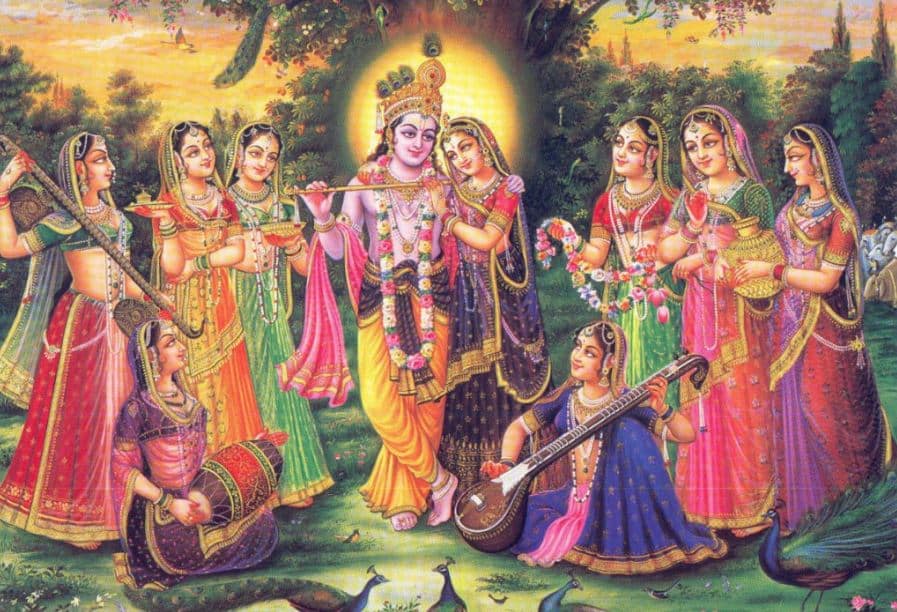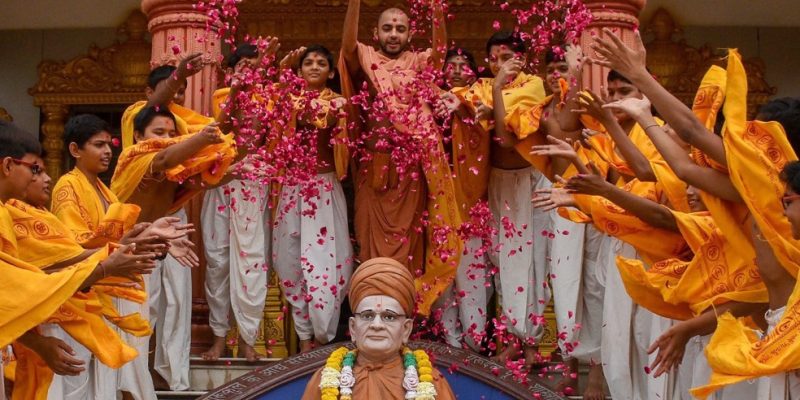
Things You Didn't Know About the Bhagavad Gita
The Bhagavad Gita is one of the most important texts in Hinduism, revered for its spiritual and philosophical teachings. It is a part of the epic Mahabharata and contains the conversation between Lord Krishna and the warrior Arjun on the battlefield of Kurukshetra. While many people are familiar with the basic teachings of the Bhagavad Gita, there are several lesser-known facts about this ancient text that are worth exploring. Here are some of them:
- One particular number is shown to have great significance in Gita
The Mahabharata and the Gita shlokas, which together make up the ocean of wisdom, all appear to resonate with the number "18."
There are 18 volumes and parvas in the Gita, just as there were 18 days in the Kurukshetra fight. The sacrificial rite requires the presence of 18 people, and in Sanskrit, the number 18 refers to sacrifice itself. In the Mahabharat, there was a military formation called an Akshauhini on the grounds of Kurukshetra that had 21,870 elephants, 21,870 chariots, 65,610 cavalry, and 109,350 soldiers. Now, if you tally up each one of these digits separately, the total will equal 18! According to legend, the Kauravas' army had 11 Akshauhinis, compared to 7 for the Pandavas.
- The Bhagavad Gita is not a standalone text
As mentioned earlier, the Bhagavad Gita is part of the epic poem, the Mahabharata. The Mahabharata is one of the longest poems in the world, and the Bhagavad Gita is just a small part of it. The Mahabharata tells the story of a war between two branches of a royal family, and the Bhagavad Gita is a conversation that takes place on the battlefield before the war begins.
- It is not just for Hindus
While the Bhagavad Gita is a Hindu text, it has been read and studied by people of many different religions and backgrounds. Its teachings on karma, dharma, and self-realization are universal and have been embraced by people of all faiths. The Bhagavad Gita is not just a religious text. It is also a philosophical and spiritual treatise that explores the nature of the self, the purpose of life. It is often referred to as the "Song of God" and is revered by people of many different faiths and backgrounds.
- Arjun was not the first to receive Krishna’s wisdom
Yes, it is well known that Arjun was a beloved of Lord Krishna's. But did you know that at first, Lord Krishna also tried to recite Bhagavad Gita shlokas to Duryodhana? If only Duryodhana had been educated, this war may have been averted. Alas, his misfortune! He continued to be as arrogant as ever, telling Krishna that he already understands the difference between good and evil and refused to listen to it wholly. Duryodhana believed he had a natural instinct that prevented him from following his dharma and making the proper choice. He became the main "adharmic" of the entire play because of his innate force.
- Arjun was not alone in receiving Krishna’s teaching
It is generally held that the Bhagavad Gita was a dialogue between Shri Krishna and the Pandava Prince, Arjun. Arjun was not the only one to benefit from Gita's teachings, though.
Since Lord Hanuman was perched on Arjun's chariot's flag, he was able to see the entirety of the Mahabharat War. Mahamuni Vedvyas granted Sanjaya, King Dhritrashtra's attendant, the gift of divine vision so that he could explain the events of the fierce battle to the blind king. The last person to learn Krishna's final teaching was Barbarik, the son of Ghatotkach, who was also monitoring the big fight from a mountaintop.
- It has been translated into many languages
The Bhagavad Gita has been translated into many languages, making it accessible to people all over the world. It has been read and studied by people all over the world, and has had a profound impact on the development of Indian and South Asian culture.
It has been translated into English by many scholars, including Sir Edwin Arnold, who wrote a famous poetic translation in the late 19th century.
- It inspired many great thinkers and leaders
The Bhagavad Gita has been studied and revered by many great thinkers and leaders throughout history, including Mahatma Gandhi, Albert Einstein, and Ralph Waldo Emerson. Its teachings on nonviolence, selfless action, and spiritual realization have influenced people from many different backgrounds and perspectives.
Albert Einstein was also an admirer of the Bhagavad Gita, and he once said, "When I read the Bhagavad Gita and reflect about how God created this universe, everything else seems so superfluous."
- It emphasizes action over renunciation
One of the key teachings of the Bhagavad Gita is the importance of action. Lord Krishna advises Arjun to perform his duties as a warrior and fight the battle, rather than renouncing the world and retreating to a life of meditation. This emphasis on action is a unique feature of the Bhagavad Gita.
The Bhagavad Gita teaches the concept of Karma Yoga, which is the path of selfless action. According to this philosophy, one should perform their duty without attachment to the outcome, and with the intention of serving a higher purpose. This is seen as a way of attaining spiritual liberation and merging with the divine.
Bhagavad Gita is full of symbolism and allegory. Its teachings are often presented through stories and metaphors, which are meant to convey deeper spiritual truths. For example, the battle of Kurukshetra is seen as a metaphor for the inner struggle between the forces of light and darkness within the human psyche.
In conclusion, the Bhagavad Gita is an incredibly rich and complex text that contains a wealth of spiritual and philosophical teachings. While it is often seen as a religious text, it is much more than that, and has inspired people of many different backgrounds and perspectives. Whether you are a scholar, a seeker, or simply someone who is interested in learning more about the nature of the self and the universe, the Bhagavad Gita is a text that is well worth exploring.

